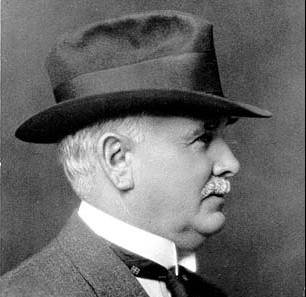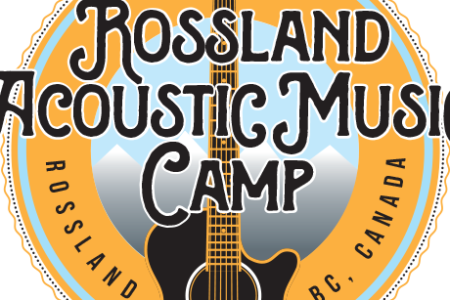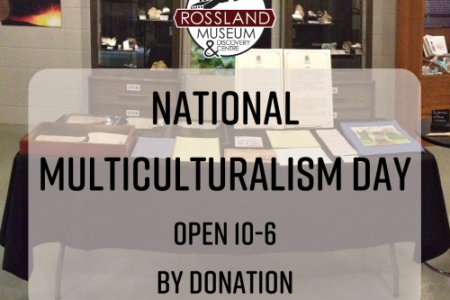LEGENDS AND TALES OF THE MOUNTAIN KINGDOM: Patrick Burns, cattle king of the Kootenays
With the influx of new people setting up homes and businesses in the burgeoning city of Rossland during the second half of the 1890s, people had to get fed somehow. They couldn’t just rely on local game and huckleberries, after all. Luckily, as soon as the boom started, commerce came quickly to the Golden City, and with it several mercantiles where one could buy just about any food item necessary, including luxury items like imported teas and delicacies from overseas.
But the mining man could not live on mercantile goods alone. Oh no. This was the Victorian era. Man needed meat–and plenty of it.
Let’s be frank: Rossland is not a rancher’s dream. Small household operations surely existed but they couldn’t produce enough for the population. Luckily, the Kootenays had its own Cattle King, Patrick Burns, and he was a rancher of some note historically. He also had quite the little kingdom, thanks to the mining boom.
Harold Kingsmill, author of the First History of Rossland, B.C : with sketches of some of its prominent citizens, firms and corporations, says of P. Burns, “it may be safely stated that there is not another name in the mining sections of British Columbia that is so frequently mentioned as that of P. Burns, the cattle king of the Kootenays.” (Kingsmill insufferably gushes similarly about everybody in this document; it’s a great read if you like biased, pompous, Old Boys Club kind of stuff.) Anyway, Kingsmill goes on to assert that the miners of British Columbia were some of the best-fed labourers in the world–and Pat Burns was largely responsible for that.
Born near Oshawa, Ontario in the summer of 1856, he was the child of Irish Catholic immigrants who eventually moved their family to a place called Kirkwood, 50 miles north of Oshawa. They farmed there, and Pat received a “rudimentary” education at the local school, but was not a good student. In 1877, he and his brother, John, decided to try their luck in the west. And here is where the future beef baron got his first experience in professional butchery.
As the story goes, “to raise money [for the trip west] Patrick felled trees during the winter of 1877-78. When he went in the spring to collect $100 in back wages, he discovered that his employer was broke. Instead, he had to accept a team of elderly oxen worth about $70. To get as much value as possible out of the animals he slaughtered them and sold their carcasses piece by piece, ultimately bringing in $144.”
In 1878, Pat and his brother arrived in Winnipeg and staked claims for homesteads at a place called Tanner’s Crossing. They then had to go back to Winnipeg, on foot, to find work to fund the building of their homesteads. Pat got a job as a rock blaster on the railroad and after six months had enough money to purchase a nice set of oxen and some homesteading supplies.
His neighbours helped him build a log cabin, and after that he used his oxen to haul lumber from the woods to a local mill, he plowed fields for his neighbours, and he got into freighting, moving goods between his little settlement and Winnipeg. With this spate of industriousness, he was able to earn enough to buy more property adjacent to his land. It was then that he began dealing in cattle. He saw an opportunity with the railroad, believing it possible to ship livestock longer distances to markets west of Manitoba, and he was the first man to do this, shipping a load of hogs to some of the CPR’s newer, bigger points out west.
Due to acute business sense and some connections, Pat became rich fairly quickly as a cattle dealer, and he supplied cattle to construction camps all along the railway line, eventually getting a contract to supply beef to places like Calgary, Edmonton, and Fort Macleod – and the Crowsnest Pass. During this time, the innovative Burns created a mobile abattoir, located in one of the train’s cars. He hired a butcher to dispatch the meat and did the business end of things himself.
Arriving in the Kootenay mining camps sometime around 1892, he set up his first shop in Nelson. Additionally, before setting up shop in Rossland in 1895, Burns started retail outlets, according to Kingsmill, in Trail, Ainsworth, Quartz Creek (I have no idea where this was), Salmo, Three Forks, New Denver, Silverton, Ymir, and Slocan City. He supplied all of these places with fresh beef, pork, and mutton at wholesale prices. The cattle came from near Calgary, Burns’s new HQ, where he had a huge ranch of over 1200 acres and a brand new slaughterhouse. The cattle were shipped on the CPR line from Alberta to the Kootenays, the first trek taking place in 1893, where the cattle arrived in Golden, detrained, and then were driven over the mountains by cowboys to Three Forks, a trip that took 25 days and was pretty expensive. It almost sounds like a John Wayne movie.
In Rossland, as he did in all the places he had retail locations, he bought land, and he built the Burns Block in downtown Rossland, right on Columbia Avenue, and his butcher business was located on Spokane Street, between Columbia and First Avenue. It would burn down in the fire of 1902.
After conquering the Koots’s meat market, Pat got the contract for a very ambitious project: providing meat to Dawson, the epicentre of the Yukon gold rush. According to biographi.ca, “Two pioneering shipments were made in 1897 and 1898. For the first, the cattle were taken by rail to Vancouver and by ship to Skagway, Alaska, and then were herded over the Chilkoot Pass. The second shipment followed the same route to Alaska but the cattle were driven over the Chilkat Pass and slaughtered at the mouth of the Pelly River. The meat was floated down to Dawson on rafts.”
A few years later, he shipped meat from Calgary to Vancouver – already frozen – in ice-packed railway cars called “reefers.” “This shipment is reputed to have been the first time any firm west of Toronto and east of Vancouver had shipped carloads of refrigerated meat such a distance. At Vancouver the meat was placed on a cold-storage steamer bound for the Yukon Territory.”
Kingsmill waxes on about the integrity and character of Pat Burns for a paragraph, and that’s all well and good. He certainly does deserve kudos for thinking outside of the box (or box car) and for being innovative enough to come up with the whole mobile abattoir idea. As for being one of the pioneers of shipping frozen meats long distances in rail cars packed with ice, well…e-coli poisoning comes to mind, that’s for sure, but perhaps that’s a story best left out of history all together. Cattle King of the Kootenays has a much nicer ring to it than E-Coli King of the West.
Sources:
1. “First History of Rossland, B.C : with sketches of some of its prominent citizens, firms and corporations”, by Harold Kingsmill
2. http://www.biographi.ca/009004-119.01-e.php?&id_nbr=8428&terms=bar
3. http://www.crowsnest-highway.ca
4. Buckaroos and Mud Pups: The Early Days of Ranching in British Columbia, by Ken Mather, as it appears in Google Books
5. Photo credit: http://www.glenbow.org/images/archpics/burns.jpg


























